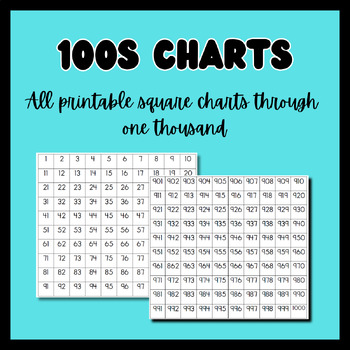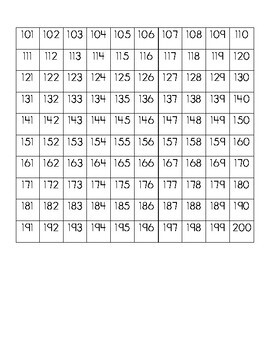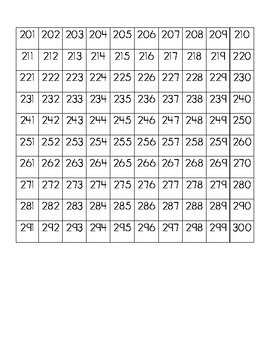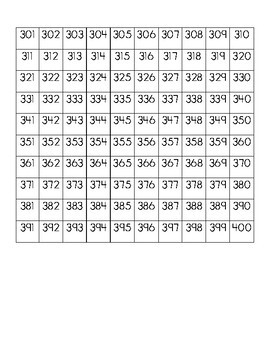Hundreds Charts: All 100's charts to 1000
Learning in the Lowcountry
12 Followers
Grade Levels
Not Grade Specific
Subjects
Resource Type
Standards
CCSSK.CC.A.1
CCSSK.CC.A.2
CCSS1.NBT.A.1
CCSS1.NBT.B.2
CCSS1.NBT.C.4
Formats Included
- PDF
Pages
9 pages
Learning in the Lowcountry
12 Followers
What educators are saying
My class is obsessed with our GIANT 1000 chart! We've glued them all together and laminated it. We use expo markers on it.. I call it our 1000 hopscotch as we practice skip counting by tens and working on adding/subtracting 3 digit numbers.
As my students advance to adding and subtracting larger numbers this has helped them keep pace with their peers.
Description
These are 100's charts. Each chart is a different set of 100, from 1-100 to 901-1000. The charts can be used to support students as they work independently in math, laminated and used for math games, or cut apart and used as puzzles to build number sense.
Total Pages
9 pages
Answer Key
N/A
Teaching Duration
N/A
Report this resource to TPT
Reported resources will be reviewed by our team. Report this resource to let us know if this resource violates TPT’s content guidelines.
Standards
to see state-specific standards (only available in the US).
CCSSK.CC.A.1
Count to 100 by ones and by tens.
CCSSK.CC.A.2
Count forward beginning from a given number within the known sequence (instead of having to begin at 1).
CCSS1.NBT.A.1
Count to 120, starting at any number less than 120. In this range, read and write numerals and represent a number of objects with a written numeral.
CCSS1.NBT.B.2
Understand that the two digits of a two-digit number represent amounts of tens and ones. Understand the following as special cases:
CCSS1.NBT.C.4
Add within 100, including adding a two-digit number and a one-digit number, and adding a two-digit number and a multiple of 10, using concrete models or drawings and strategies based on place value, properties of operations, and/or the relationship between addition and subtraction; relate the strategy to a written method and explain the reasoning used. Understand that in adding two-digit numbers, one adds tens and tens, ones and ones; and sometimes it is necessary to compose a ten.





